Mid Pines #4 Donald Ross 1921
A short Par 4 of just 310 yards from the very tips plays uphill to a fairway canted significantly from left to right. The plateau green pinched in the center to only 11 paces from back to false front runs at 45 degrees to the line of play. The fairway at its widest point 95 yards out from the center of the green narrows to only 22 yards at the edge of the fronting bunker.

Up for discussion.
“the Tree” ; should it stay or should it go.
For the past couple of years I have been having an ongoing debate with Ran on the value of an 80 year old (age approximate, but likely not there when the course was built in 1921) long leaf pine to the playability of this hole. While generally acknowledged as one of the best par 4s in the Sandhills, I believe that removal of an 80 year old long leaf pine that obstructs the right side of the green would improve the hole by providing shot options and put the teeth back into what was Ross’s most severe green complex on the course.

From the tee box.
What appears to be a generous fairway yields only a full view of the green from about 50% of its area. The substantial tilt of the fairway affects the ball such that a drive more than 8 paces inside the waste area on the left is likely to end up on the right side of the fairway.
The remainder is partially or fully blocked by “the Tree”. This is one of Ross’s finest green complexes on the course and emasculated by a “Tree” that prevents well over half of all golfers from having any approach shot to most of the green.
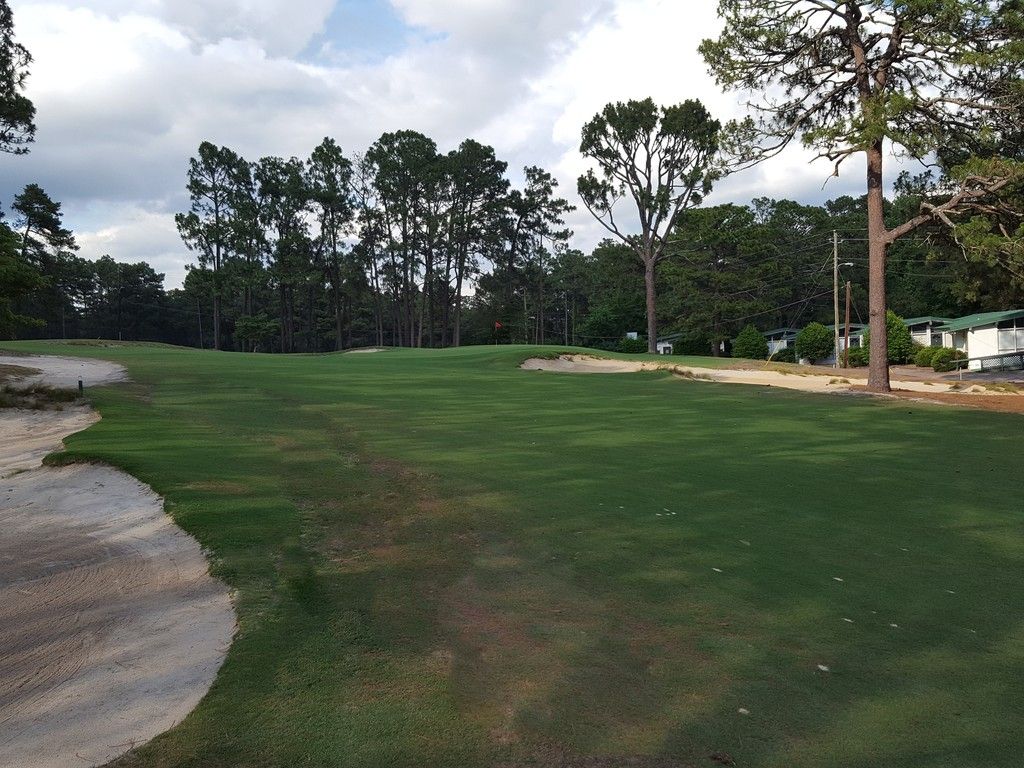
View from 95 yards from fairway close to the left waste area.
Here one sees the advantage gained by an accurate drive that challenges the waste area on the left side of the fairway; a view straight down the green that sits at 45 degrees to the line of play.
While drivable for the long hitters most players will have to decide whether to press to get the ball up closer to the green as the fairway narrows appreciatively. A draw of about 200 yards is rewarded with a wedge or running shot to a green that narrows toward the back and drops off all around.
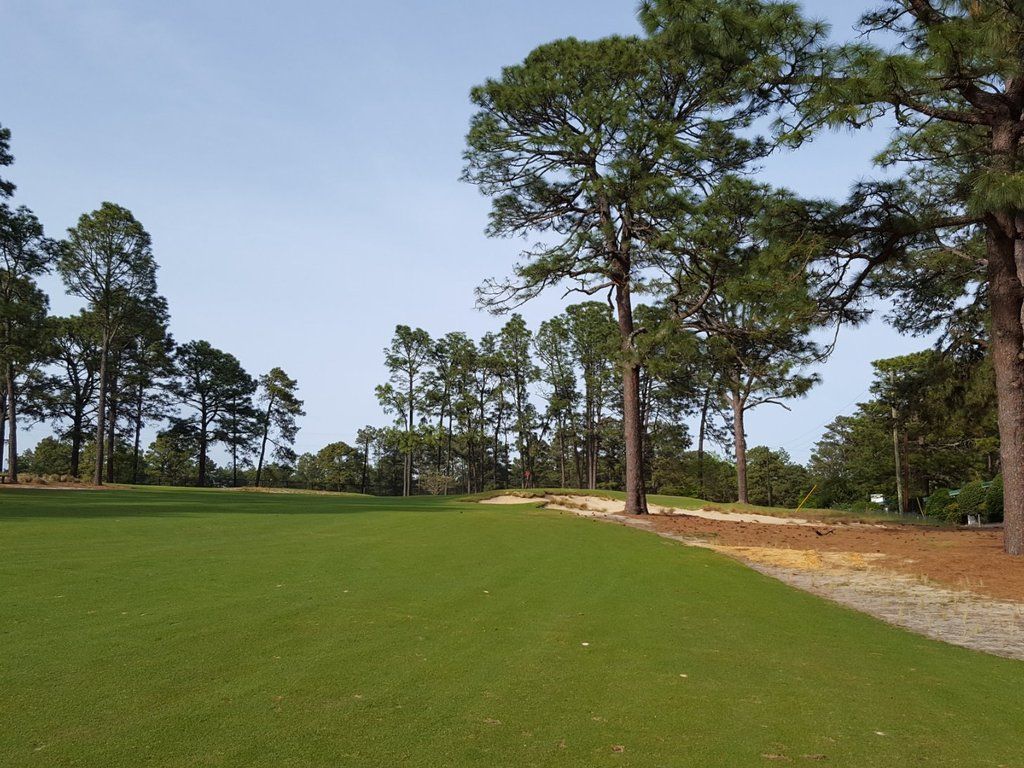
View from 95 yards 5 paces from the right side of the fairway.
From the right side of the fairway “the Tree”, only 44 yards from the center of the greenstands as an obstacle (not a hazard) that dictates a layup out to the left side of the green. Ross did provide this as a viable ground game option as the topography will move a well weighted ground shot left to right onto the front edge of the green.
The option of challenging the fronting bunker and severely sloped right side of the green is taken out of play except for the mentally challenged. This is the most severe green on the course and should generate a very high pucker factor for those brave enough to take on this 12 pace deep right rear pin where disaster awaits front, back and right. But alas this option is no longer available as “the Tree” has neutered the hole of its intended character. Surely Ross did not build this marvelous green complex to not have it challenged.
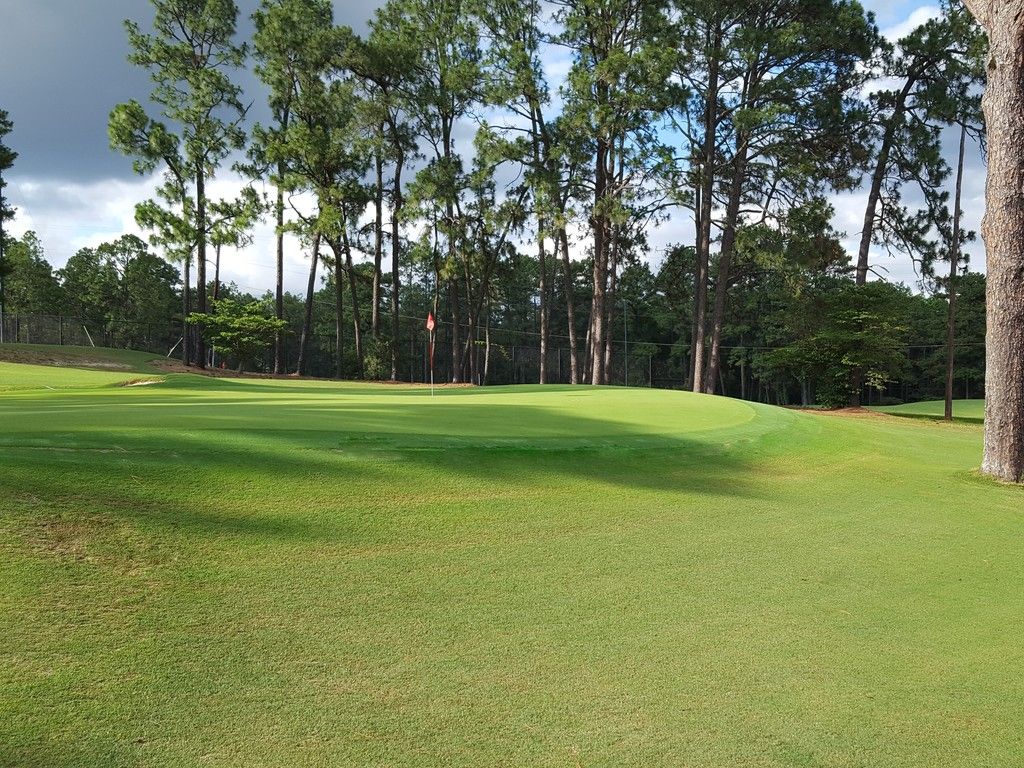
Short of the green from the right side of the bunker.
Here one sees the severe false front that would face an approach shot sans “the Tree.
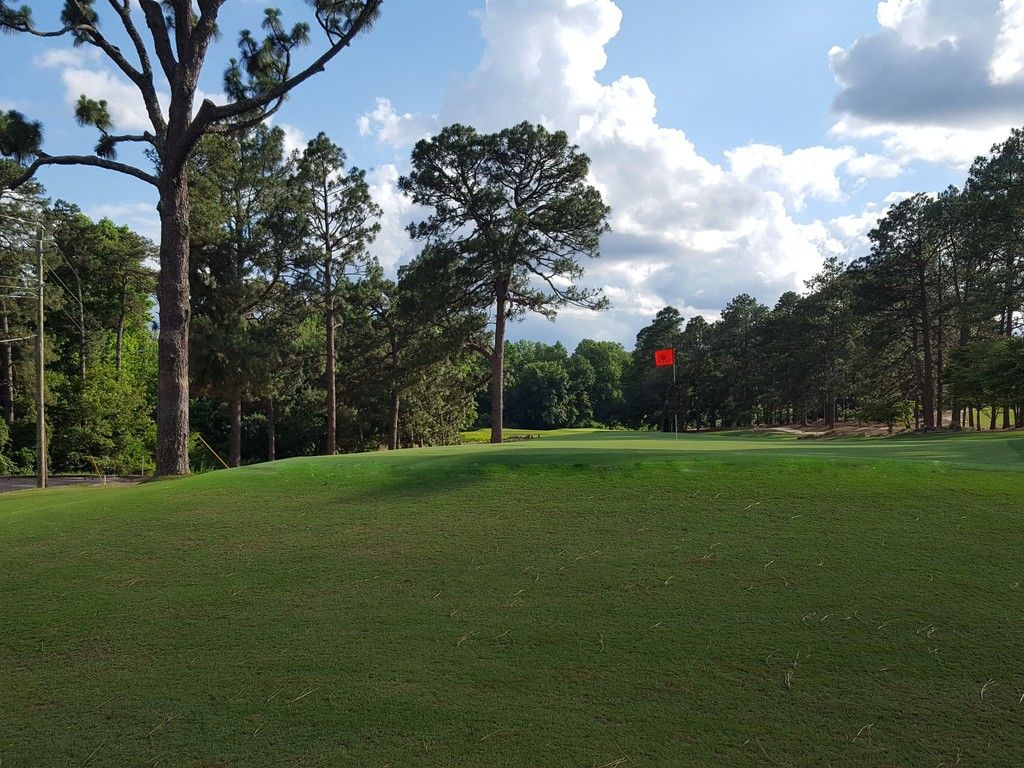
From behind the green with “the Tree” and tee in the background.
The false front is not the only challenge that one faces. As with so many Ross greens going for a pin atop a VW beetle may be fools play. Perhaps it is fortunate that “the Tree” is there to force a layup out to the left and so save many golfers the indignity of multiple failed approaches from 20 feet away.And that is just the right side of the green
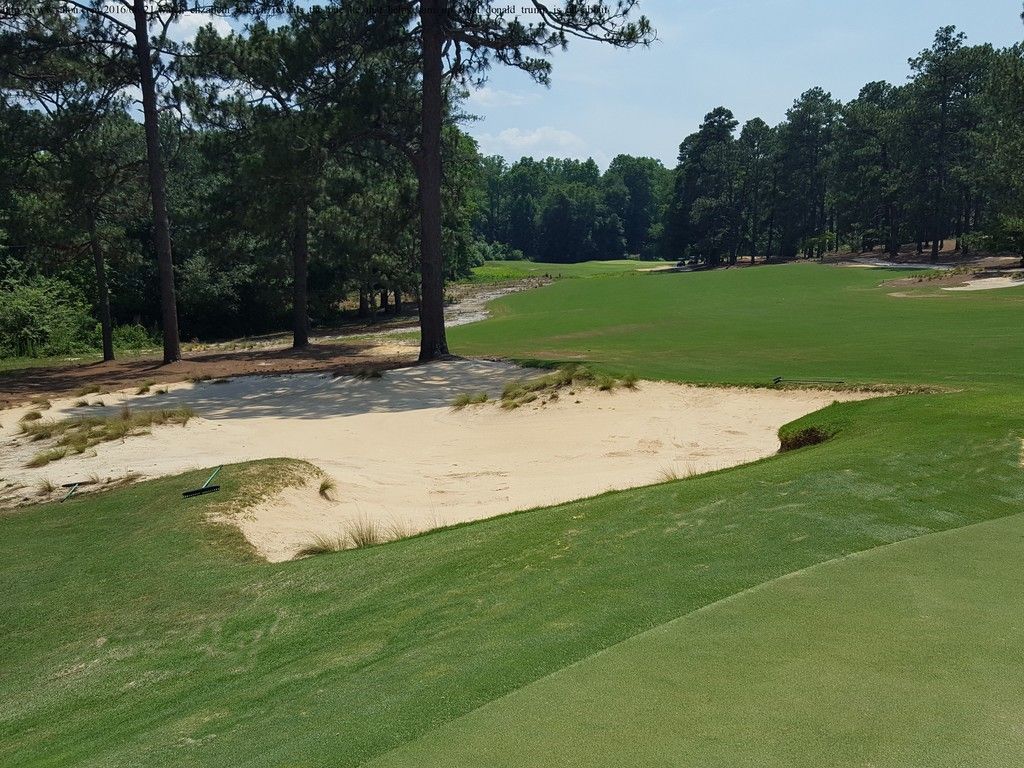
Yawning front bunker
This large deep bunker is rarely intentionally challenged from the right side of the fairway due to “the Tree” that sits at its base.
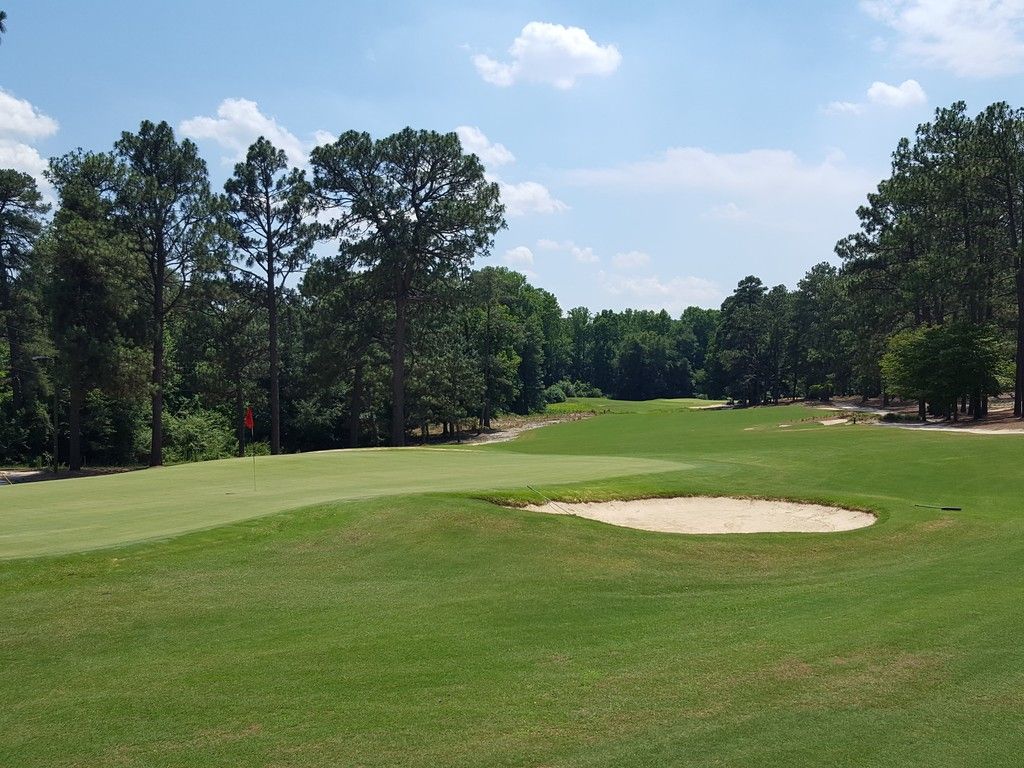
Back bunker looking back toward the tee..
While the perils of this innocuous looking bunker are not limited to shots that would otherwise be blocked by “the Tree” it will surely punish a pulled approach to a right or center pin. From this bunker the green runs away to the false front only 12 paces from edge of the green. The sand shot from here requires the most delicate touch on the course.
While I could go on about prime tenants of GCA thinking about width and options, I believe that my point is best made by the architect himself.
“As beautiful as trees are and as fond as you and I are of them, we still must not lose sight of the fact that there is a limited place for them in golf. We must not allow our sentiments to crowd out the real intent of a golf course – that of providing fair playing conditions. If it in any way interferes with a properly played stroke, I think the tree is an unfair hazard and should not be allowed to stand.” Donald Ross 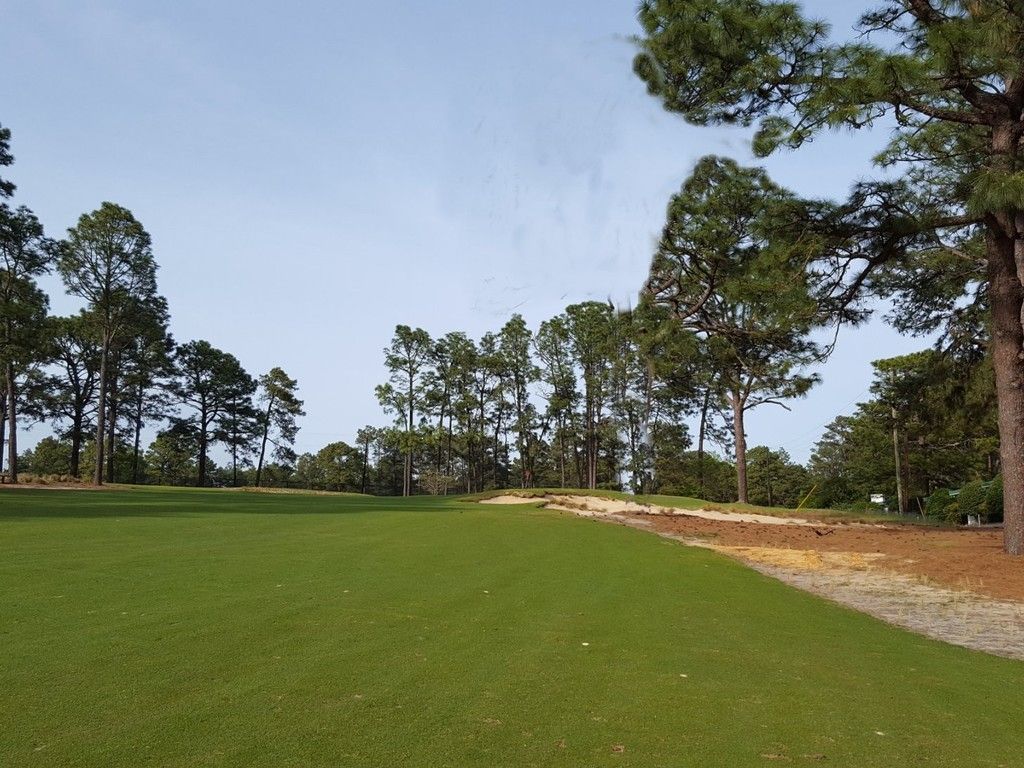
As Donald Ross intended.